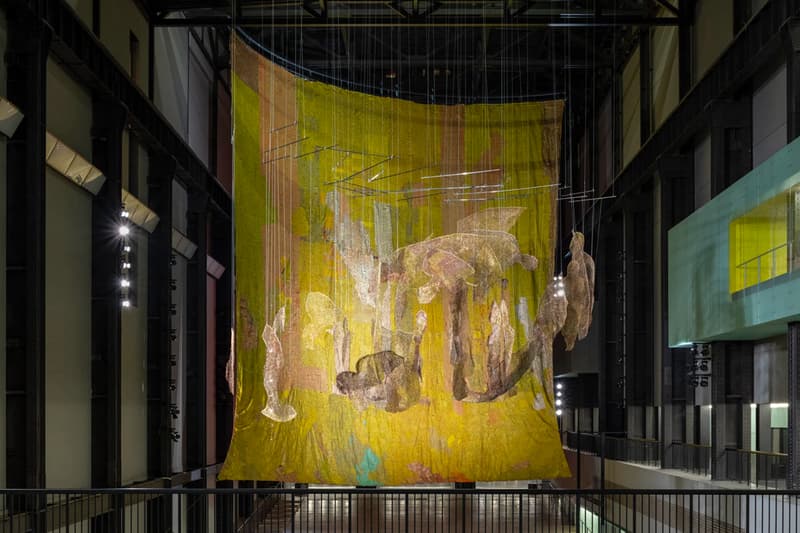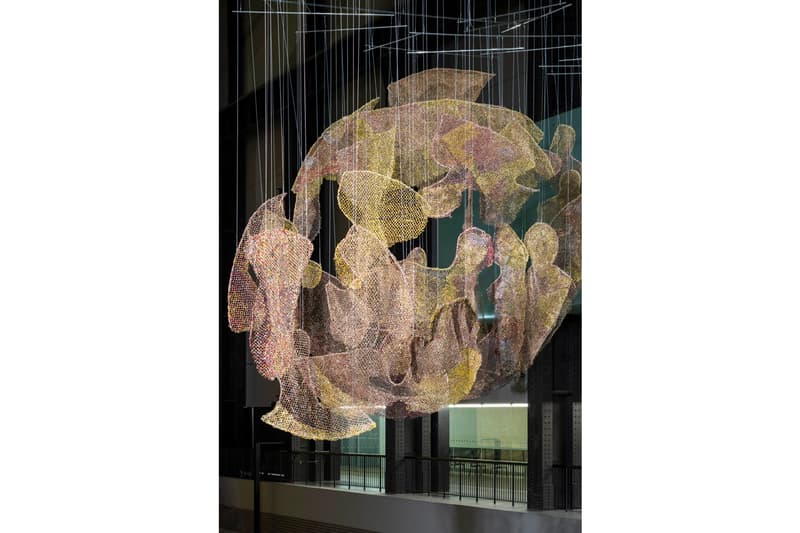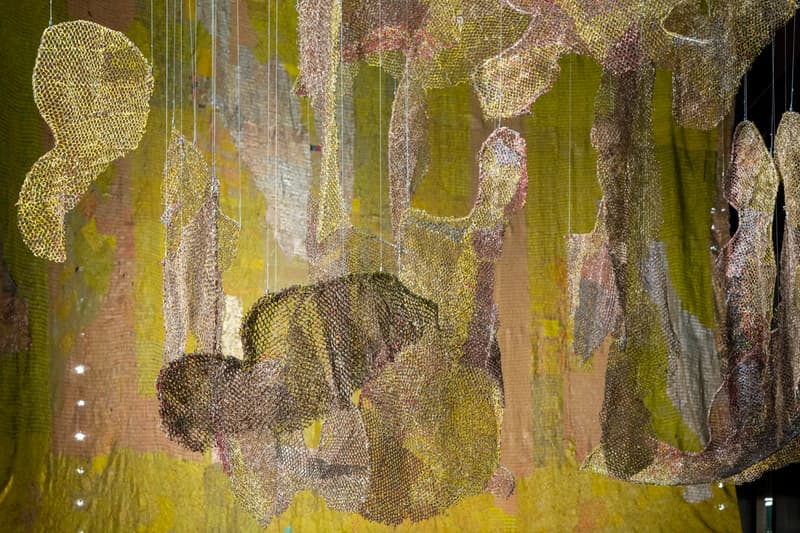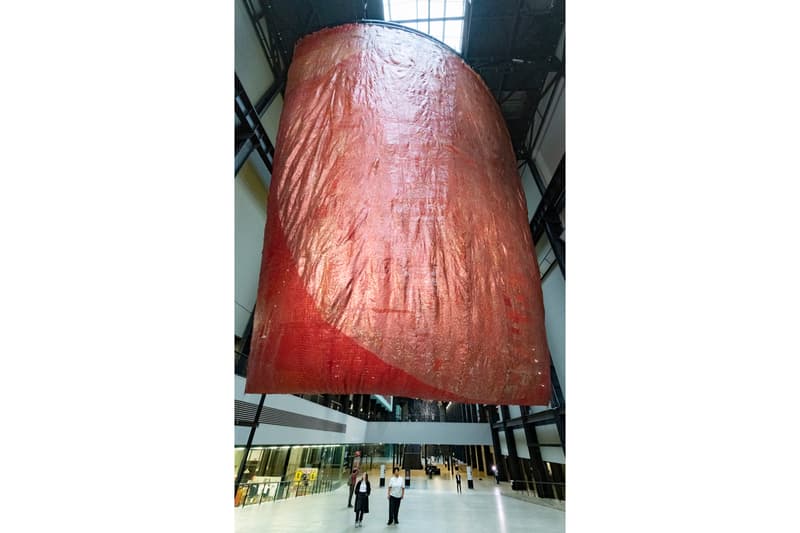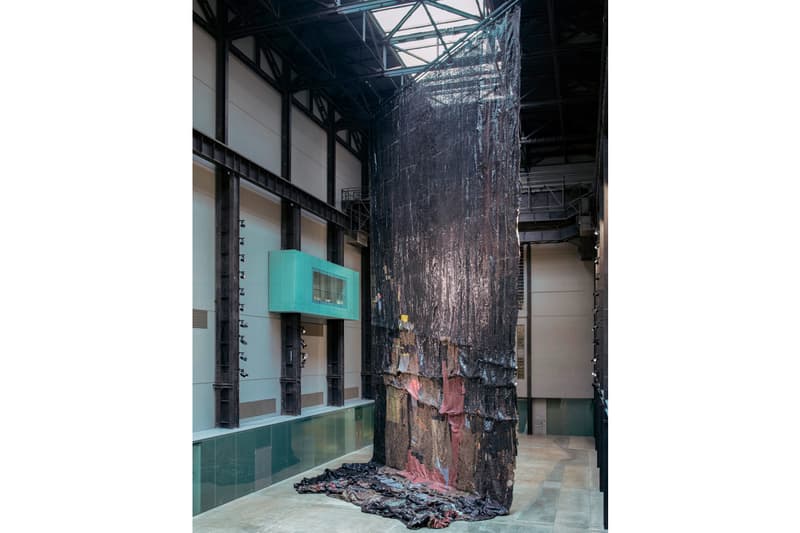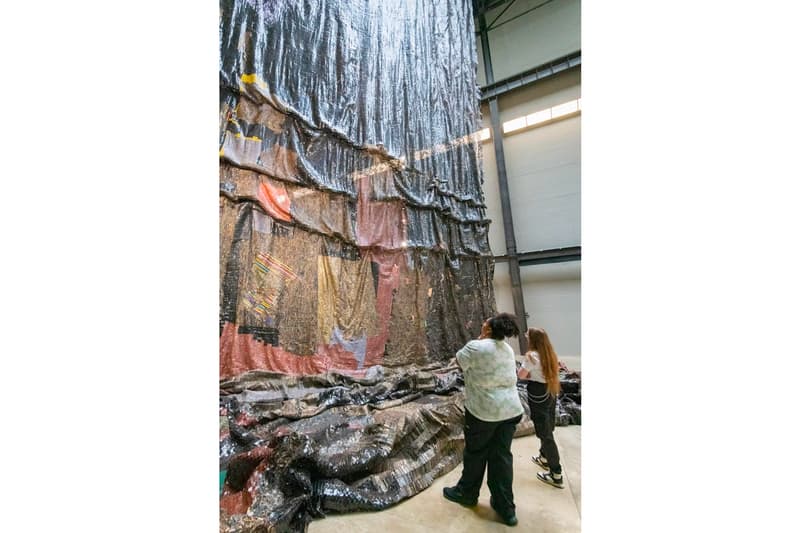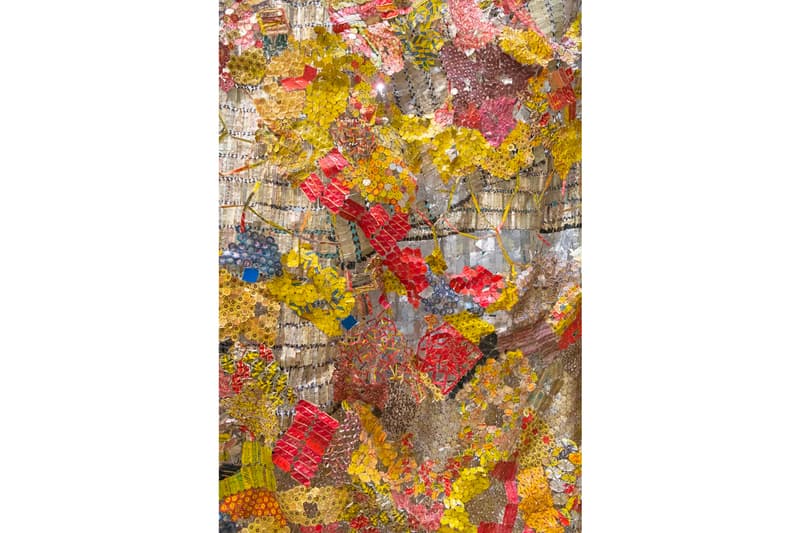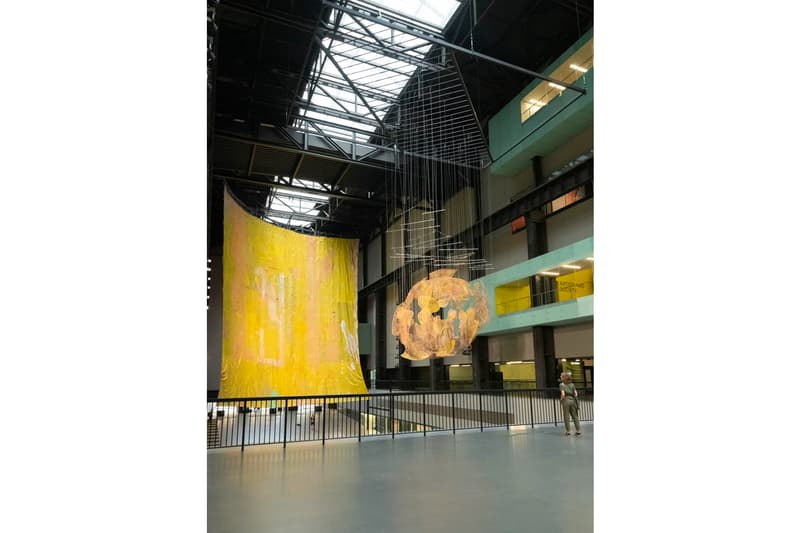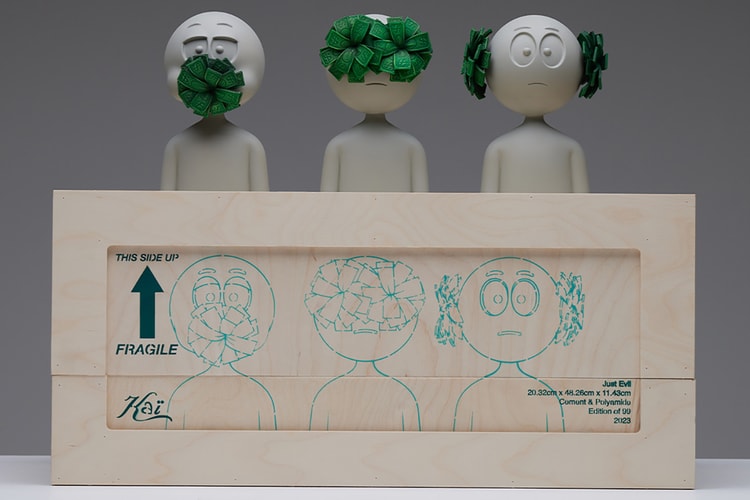El Anatsui Presents Monumental Installation at Tate Modern's Turbine Hall
Probing into the colonial legacies of the trans-Atlantic slave trade and the origins of the museum in which it resides in.
Coinciding with the return of Frieze London, Ghanaian sculptor El Anatsui has unveiled the latest artwork to don the halls of the Tate Modern‘s Turbine Hall. Commissioned by Hyundai, Behind the Red Moons is a series of site-specific hanging sculptures that subtly probe into the founding of the museum in which it resides in. Anatsui has long been known for using discarded materials, such as bottle caps found off liquor and medicinal bottles, to create monumental sculptures that serve as commentary into the colonial legacies of the trans-Atlantic slave trade.
The installation is segmented into three meticulously woven sculptures that billow over the viewer. The first, The Red Moon, makes reference to the sail of a ship making voyage across the Atlantic Ocean; while in the second, The World, Anatsui alludes to human figures that frantically suspend in space. Rounding the series together, the Ghanian artist and professor presents a towering floor-to-wall artwork dubbed The Wall, made with thousands of pieces of black sheet metal.
Shimmering from a distance, the murkier social histories intended within Anatsui’s work gives way upon closer look. Charged with meaning, the bottle caps make reference to the commodities of the British plantation systems across the Caribbean, Americas, and the trans-Atlantic slave trade. In particular, sugar, and its ties to Henry Tate — to which the museum’s patron, along with his partner Abram Lyle, gained their riches comes into focus. “The only brand of sugar we ever used in the Gold Coast and, later, after independence, in Ghana, was Tate & Lyle,” noted the artist.
While historians of the Tate museums have go on record stating that neither Tate or Lyle were born when the slave trade was active, nor did they own any slaves themselves, their industries were “constructed on the foundation of slavery in the 17th and 18th centuries, both in supply and in demand,” noted the institution. “Without slavery, the British sugar industry and the wider Atlantic sugar industry would not have existed in the form and on the scale they did.”
Woven together are themes that transcend just colonialism, permeating into the present as a commentary on waste, displacement, oppression, and survival. Witness Behind the Red Moons at Tate Modern until April 14, 2024.
In related news, check out Hypeart’s guide to Frieze London 2023.
Tate Modern
Bankside, London
SE1 9TG, UK

